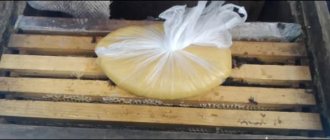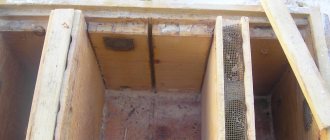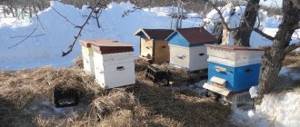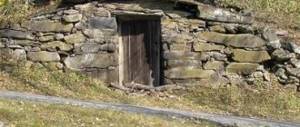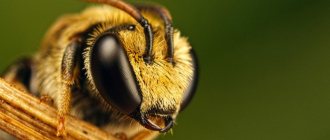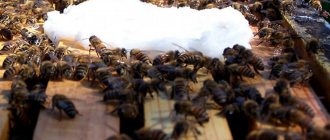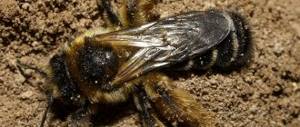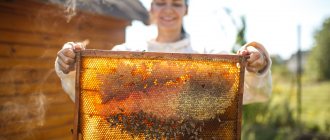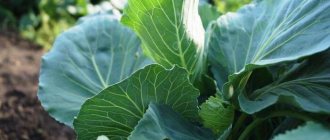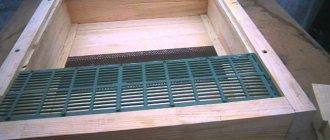Caring for bees is a labor-intensive and responsible job. A highly organized family, it feeds itself independently in the summer. However, for better pollen collection performance, bees need to be fed with additional vitamins. The quality of pollen nectar and the performance of a highly organized insect directly depend on the spring feeding of bees.
Feeding bees
When to feed bees in spring
Starting from the end of March, beginning of April, that is, with the arrival of early spring, workers begin to prepare for collecting pollen.
At this point, it is necessary to organize feeding of the bees with the addition of medicinal drugs to the food.
Adding additional components to the feed:
- helps stimulate the uterine egg, which will subsequently lead to good offspring;
- will help cure sick insects, prevent the spread of the disease to the swarm;
- will ensure seeding of brood before pollen begins to bloom.
When to feed
In spring, a special approach to bees is required, as during this period they are irritated, restless, noisy and angry. At elevated temperatures in the hives, bees become susceptible to a variety of disorders and illnesses, which lead to numerous deaths.
Individuals begin to make noise when the honey transforms (it begins to crystallize). In such situations, you can give the insects water. Excessive disturbance among insects occurs due to feeding on honey and honeydew.
In March, it is necessary to ensure that the area with the apiary is protected from cold winds. Bees should not be allowed to fly out of the hives. If there is snow in March and April, it is important to clear the area for the hives.
Algorithm for a beekeeper in early spring:
- check the condition of the bees after wintering;
- do not allow severe overheating, provide ventilation;
- In early spring, insects need to clean their intestines; for this purpose, a flyby is made;
- to speed up the flight period, surround the hive with wooden frames and glass;
- fill feeders with different types of food.
What are the results of early feeding of bees in the spring, see below.
What drugs can be added to complementary foods?
We will separately consider the question of what drugs can be added to complementary foods, at what temperature bees can be fed in the spring, and what causes diseases in the family.
After winter, the hive needs to be disinfected, or better yet, replaced with a new one. Be sure to check the offspring for diseases, which often occur due to high humidity and lack of food.
The main diseases of bees include:
- Varroatosis. It is formed due to mites that settle on the bees themselves and feed on their lymph. Infection quickly spreads throughout the hive, which can lead to the death of the family. Veterinarians use the antibiotic "Apifin" for treatment. And also red pepper, the recipe for which is very simple: ground or capsicum is diluted with water (8 g per liter). Infected female workers are sprayed with this solution;
- Salmonellosis. A disease of the digestive system of bees caused by helminths. Indicative signs of the disease are frequent insect bowel movements and a swollen abdomen. Treat with “Streptomycin” and “Tetracycline”, adding them to complementary foods;
- Nosema is detected by the condition of the hive walls. With this disease, the honey plant defecates on the floor with liquid stool of a constant nature. It is contagious because it is formed by single-celled organisms. The disease is treated with Furmaggelin, adding it to complementary foods.
On a note! To prevent diseases in working women, crushed garlic is added to the complementary foods (separately on the substrate). One slice is enough. It will act as an air disinfectant.
Next, we’ll look at what and how to feed families.
Honey is full
It is fed to working women in early spring. This incentive feeding stimulates the younger generation of bees to actively collect honey, so you should not give it if the weather is cool.
On a note! The honey family also needs to be fed well in the fall, when the honeycombs with honey are removed from the hive.
The top dressing is prepared from melted honey with the addition of water.
- If you add 250 grams of water to one kilogram of honey, you will get a thick filling;
- When mixing equal proportions per kilogram of honey, add one liter of water, you will get average satiety;
- If you dilute the same proportion of honey with two liters of water, you get a liquid supplement.
It is better to feed thick, well-fed bees in the fall, and medium and thin ones in the spring. If necessary, add wormwood or spices.
It is forbidden to give crystallized or sour pollen nectar. If the bees eat it, they will die.
Work performed after the spring audit
Incentive feeding of bees, mentioned above, is used only if there are no bribes in nature. Meanwhile, in many areas, if the weather is favorable for the release of nectar, in the spring bees can collect a significant amount of honey. Honey collection from the first spring honey plants: plants of the willow family, white acacia and others is of particular importance. In good weather, at the time of flowering of these honey plants, bees can bring such a large amount of nectar that the beekeeper has to resort to a significant expansion of the nests and sometimes even partially select honey from the hive. In places with a good food supply, bees bring up to 3-4 kilograms or more of nectar per day to the hive.
With the onset of abundant early spring honey harvest, in the case of keeping bees in multi-hull hives, it becomes necessary to install an additional body, and when keeping bees in hives of other systems, several nesting frames are added to the nest and magazine extensions are installed.
Only strong bee colonies that have successfully overwintered and have a large number of flying bees can make good use of such a bribe in the spring. Weak bee colonies do not work well during the spring honey harvest, and their food reserves are replenished in small quantities. Of great importance for the successful spring collection of nectar are the autumn strengthening of bee colonies and their early exhibition from the winter hut. In some apiaries, beekeepers in the spring, when a good harvest occurs, unite weak and average bee colonies while simultaneously planting “extra” queens in single-frame temporary nucs. Thus, a large number of flying bees are grouped in individual bee colonies, which leads to an increase in the supply of nectar by the bees. After the bribe is completed, the bee colonies are separated again, returning the queens taken from them along with a frame of brood.
Carrying out such work is most convenient when organizing the wintering of bees in hives-beds in such a way that two bee families winter in each hive. Since spring, such families mutually warm each other, which contributes to their better development, and later, as they grow, they are seated in independent hives.
Some beekeepers, to increase brood, use feeding bee colonies with small portions of diluted honey (two glasses of water per 1 kg of honey) or liquid sugar syrup (1 liter of water per 1 kg of sugar). Bees are given food daily or every other day, but 200-300 g per family. If there is even a slight bribe in nature, such feeding does not noticeably increase the number of brood in the families. But it undoubtedly helps to improve the quality of the bees raised, as it provides better nutrition for the larvae from the nurse bees.
As we can see, feeding families with small portions of honey did not increase the number of brood. Feeding in large portions gave a slightly better result (by 6.8%). However, the greatest effectiveness was achieved by periodically unsealing part of the honey cells on the outer combs. This technique is widely used in the practice of advanced beekeepers. During periodic inspections of colonies, one-third or one-half of the comb area is printed on one side of the frame. You can also place new honeycombs with printed honey cells at the edge of the nest.
You can increase the efficiency of fertilizing by adding 5% regular baker's yeast to sugar or honey syrups. The fertilizer was prepared as follows. Sugar syrup was prepared at the rate of 1 kg of sugar per 1 liter of water. Weighed out 25 g of fresh baker's yeast, ground it thoroughly in a mortar with 50-100 g of sugar syrup; the resulting suspension was diluted with syrup to 0.5 l and boiled. The result was a sugar top dressing containing 5% of baker's yeast, ground and killed by boiling. Before preparing the top dressing, dry yeast was processed in the following way. The yeast was soaked in slightly sweetened water, stirred thoroughly and placed in a warm place. After this, the yeast multiplied rapidly. A day later, the yeast was poured into a sugar solution and boiled.
Fresh feeding was prepared daily and given in feeders in the evening, about a glass per family (feeders must be washed and dried each time). Yeast feeding accelerates the development of bee larvae; There was an increase in the size of the bees' body, their weight and the length of the proboscis. Colonies that were given yeast fertilization for 20-40 days in the spring grew more brood and collected more honey compared to control families that did not receive fertilizing. You can also successfully feed sugar syrup with cow's milk to bees in the spring. For feeding, prepare a thick sugar syrup at the rate of 2 kg of sugar per 1 liter of water.
Before distributing the food, add an equal amount of fresh (preferably fresh) milk to the syrup, stir and give 200-400 g per family overnight in regular feeders. Feed should be given no more than the amount that the bees can take during the night. If the bees do not take all the food dry, the feeders should be washed and dried in the sun.
- Back
- Forward
Sugar syrup
This supplement serves as a substitute for honey satiety. It is used in winter, when honey reserves are running low.
Making sugar syrup is very simple:
- drinking water is brought to a boil and white sugar is added there in equal proportions;
- then cook for a few minutes until the bubbles disappear and remove from heat;
- Afterwards, the sweet water is cooled and distributed into bags.
On a note! For a richer complementary feeding, more sugar is added (3/1).
You can read more about the use of sugar syrup at the link.
Feeding with honey
We recommend reading our other articles
- Potato variety Impala
- Raspberry variety Glen Coe
- Incubator Ideal Hen
- Columnar apple trees
Honey is the main food of bees. If there is not enough honey in the hive by spring, the bees will starve. Honey feeding of bees in the spring is the best treat for them in this case.
Photo of honey full
- Honey is full.
This is a simple water solution of honey. It is not economically profitable, but it is much healthier than any syrup, as it contains many vitamins, nutrients and is as close as possible to nectar. It strengthens the immunity of bees, stimulates their activity, and is used to activate egg laying and quickly grow a colony.
Important!
If necessary, you can always add medicines for bees to this feeding.
Depending on the consistency of the food, it may act differently. Thick, full is used as food, medium-thin for reproduction and stimulation for emergence. The bees are usually sprayed with liquid so that they get used to each other.
How to cook it? Honey is brought to a liquid state if crystallized (heated) is taken, then mixed with water. For liquid, you need a concentration of honey and water of 1:2. For medium consistency, take equal parts. For a thick filling, 4 parts honey only needs 1 part water.
- Kandy.
Kandy is a dough-like food for bees. There are a lot of recipes for its preparation, but there is also a classic one, honey. 26% honey, 74% powdered sugar, 0.18% water and 0.02% vinegar are mixed until smooth. This dough is divided into convenient pieces and placed 200-300 g each on top of the frames.
Kandy
Kandy is a thick nutritious mass, the composition of which is optimal for insects during idle periods.
Kandy is made as follows:
- The liquid component (honey or syrup) is dissolved in a water bath at a temperature of 55°C and cooled to 37-40°C.
- Powdered sugar is gradually added to the melted mass and mixed in with your hands on a cutting board. It is recommended to dilute a mixture that is too tight with a small amount of water.
- Add medications and knead the dough for 20-30 minutes until it becomes elastic and homogeneous.
- The mixture is divided into pieces weighing 1 kg and packaged in bags, gauze or paper.
You can read more about kandi recipes by following the link.
Salted water
Salted water is given as a supplement for feeding highly organized insects. Add 0.01% table salt to one liter of water. This is only 100 mg per 1 liter of water, and 1 gram per bucket (10 liters).
Water is poured into drinking bowls and placed in the center of the apiary on a horizontal platform 40 cm from the ground. It is advisable to find a place protected from the wind and well lit by the sun.
Be sure to place a drinking bowl with fresh spring water next to the salted water.
Vitamins and microelements
The addition of the trace element cobalt gives very good results for increasing egg production. When using it in the spring, there is an increase in the number of brood from 19 to 28%, and the productivity of families increased by 21%. This is explained by the fact that cobalt atoms form the basis of vitamin B12, which stimulates the metabolism of hydrocarbons in the body.
The following cobalt compounds can be purchased in veterinary pharmacies:
- chloride;
- sulphate.
The dose of cobalt is calculated based on the following proportion - 8 mg of pure microelement per liter of finished syrup. Cobalt compounds are taken at the rate of 24 mg per liter of syrup. You can often buy cobalt chloride in tablets. Their usage rate is one tablet per two liters of sugar syrup.
Among the cobalt-containing preparations for bees, we should mention the complex additives “Pchelodar”, DMK (multicomponent complex additive).
This is interesting: Uniting bee colonies in the fall before wintering
Bees in early spring need not only feeding, but also water. Not only clean water is poured into special drinking bowls, but also lightly salted water (no more than 0.5% salt). It is better to replace regular salt with sea salt. To strengthen the bee family, vitamin B12 is added to the water, which can be purchased in ampoules at a regular pharmacy.
One ampoule is dissolved in three liters of water. The presence of cobalt in the vitamin promotes the development of bees. By the way, water with additives is not used constantly, but clean water should be available to the bees.
